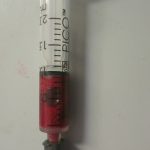Table of Contents
Whether short-term or long-term, respiratory diseases can happen to anyone, often disrupting one’s daily lifestyle and affecting his or her quality of life. According to the World Health Organization, 235 million people suffer from asthma, which is a common lung condition among children. What’s worse is that about 3 million people die every year because of chronic obstructive pulmonary diseases (COPDs), which amount to 6 percent of all deaths across the globe.
These facts alone tell us that respiratory problems should not be taken for granted and should be dealt with promptly. Before anything else, it is essential to know if you are at risk for these common respiratory conditions to ensure early diagnosis and treatment.
Acute Respiratory Infection
An acute or short-term respiratory infection is a disease that disrupts one’s normal breathing, affecting either the upper or the lower respiratory system. While it is impossible to completely avoid bacteria and viruses to prevent a respiratory infection, there are certain risk factors that can heighten one’s chances of developing one.
Particularly, viruses usually affect children, because of their undeveloped immune systems, and the elderly, because of their weakened immune systems. In fact, viruses can quickly spread in children every time they simply rub their eyes or put their hands into their mouths. Other people who are at risk for acute respiratory infection are people with heart or lung conditions or diseases that weaken the immune system.
Asthma
Asthma is a common respiratory problem affecting about 26 million people in America. This condition often starts in childhood but can begin later in some individuals. When asthma is triggered, usually by dust, allergens, or stress, the airways of the lungs swell and constrict, making it more difficult for the person to breathe.
Although there is no known cause of asthma, there are certain factors that may increase one’s risk of acquiring it, which include having a family history of asthma, having allergies, smoking, and being overweight. Environmental factors also play a vital part in triggering an asthma attack.
Chronic Obstructive Pulmonary Disease
COPD is a respiratory condition in which the lungs become inflamed, which leads to the overproduction of mucus and, therefore, the thickening of the linings of the lungs. This leads to difficulty in breathing, wherein the lungs are not able to efficiently let oxygen in and carbon dioxide out. Some conditions associated with COPD include emphysema and chronic bronchitis.
You will most likely be at risk for this incurable, progressive condition if you smoke or if you are often exposed to secondhand smoke. Meanwhile, genetics is also a powerful component in one’s risk for COPD, as well as air pollution and occupational health hazards such as smoke, dust, and fumes.
People with COPD, especially those who are prescribed with supplemental oxygen therapy, may need to monitor their pulse oximetry using a Datex Ohmeda SpO2 sensor to determine their oxygen saturation levels and to identify if the oxygen therapy is working effectively. There are also home pulse oximeters that they can conveniently use as prescribed.
Pulmonary Hypertension
Think of it as high blood pressure in one’s lungs. Pulmonary hypertension is a respiratory disease that involves the blood vessels found between the heart and lungs. When these blood vessels are blocked and narrowed, the heart compensates by pumping more blood forcefully, increasing blood pressure in the area.
Pulmonary hypertension may be caused by other lung diseases, such as COPD or interstitial lung disease, but other risk factors may also contribute to this condition. These include having a family history of such disease, being overweight, taking illegal drugs, and using appetite-suppressant drugs.
Cystic Fibrosis
Usually starting in infancy, cystic fibrosis changes the mucus in the body from being slippery and watery to being thick and sticky. This overproduction of thick mucus in the lungs can lead to difficulty in breathing and can make it easy for bacteria to grow. This condition is caused by a gene mutation, and while there is no cure yet for the disease, early diagnosis and treatment can help relieve its symptoms and slow its progression.
Important
If you are at risk for any of these respiratory diseases, consult your doctor and undergo certain tests as much as possible at the soonest time. After all, it’s always better to be on top of your health at all costs.
This is a sponsored post by Tara Desquitado. All reviews and opinions expressed in this post are based on his/her personal view.






